Another month has passed on our one and only planet, so following this new type of post from its initial launch last month, I present the creatures I featured on my nature-focused Instagram within the month of November in 2022.
This month we explored tidepools in two different settings over a total of six nights. Mushroom season really got going. With the help of a new friend, we’ve found many new-to-us fungi. Insects have slowed as they do in the winter, despite the month light still being up most nights, and our Berlese funnels always filled with debris. Sadly small dark beetles often don’t make the cut to be featured on my social media.
In November I created more videos in the form of Reels, and TikToks, but you’ll have to check out those platforms for that content.
All these creatures, plants, and fungi were observed on the ancestral lands of the Wiyot, Yurok, and Sinkyone peoples.
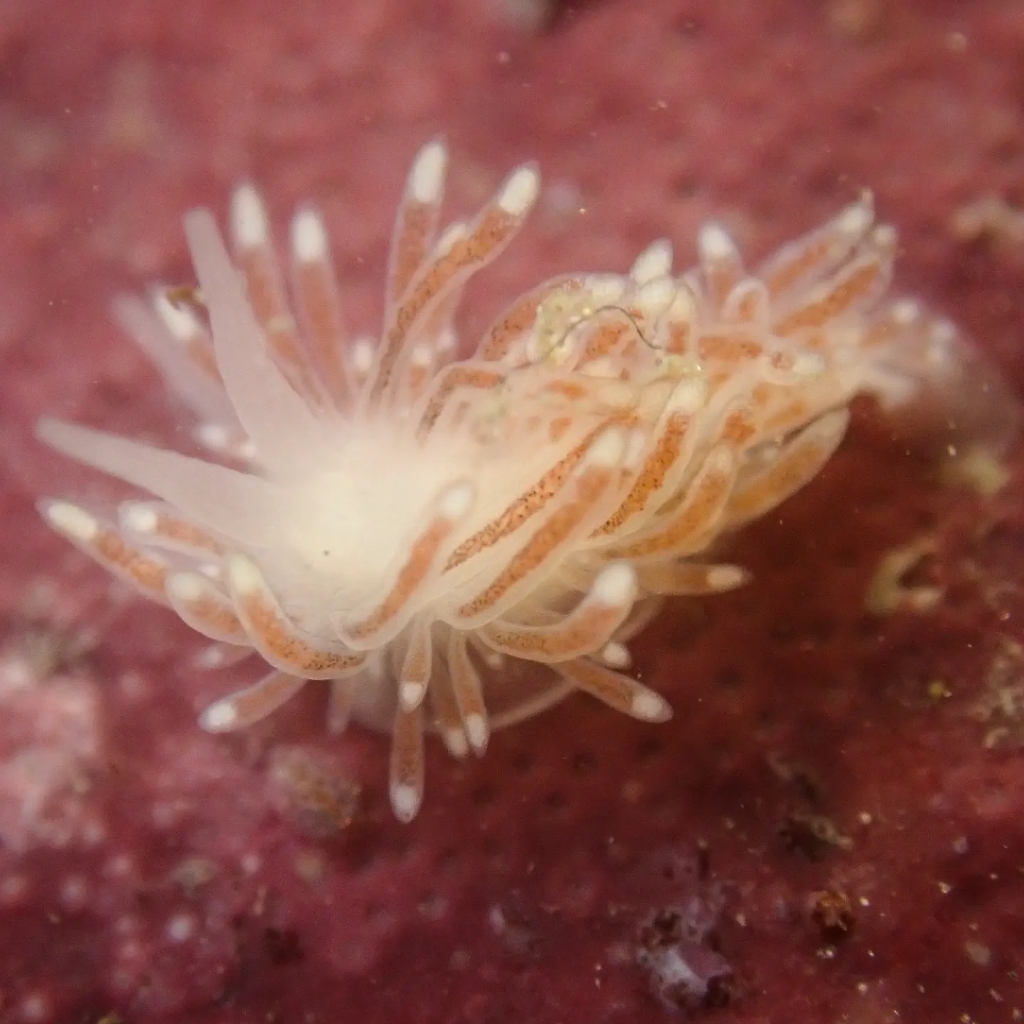


Rose-pink Cuthona, Cuthona divae
Ahhhhhhhhh meet Trevor and I’s 76th nudibranch!
On day four of tide-pooling the Thanksgiving tides up here in NorCal, we were at a new spot to us, and it wasn’t delivering the quantity of nudibranchs like other places, which is fine, but we also weren’t finding many creatures that were new to us.
We were about to call it quits at 9 pm when the goal was to stay out till 9:30pm when WAAAA LAAAA Trevor spotted two cuties. Two Rose-pink Cuthona Cuthona divae! A lifer for us! SUCCESS!
Photographing them in situ was rough, the tide was coming in, and half of Trevor’s upper half was under the water in order to get the angle right. The wind was picking up, and these two idiots were not staying submerged under the fluctuating particle-filled water. GAH!
With a lot of perseverance, we captured #76, and headed out back to our car. But not before getting spun around, heading in the opposite direction of the car along the beach.
Who will be #77? Hmmmm, hopefully, the Christmas tides will provide a new friend.
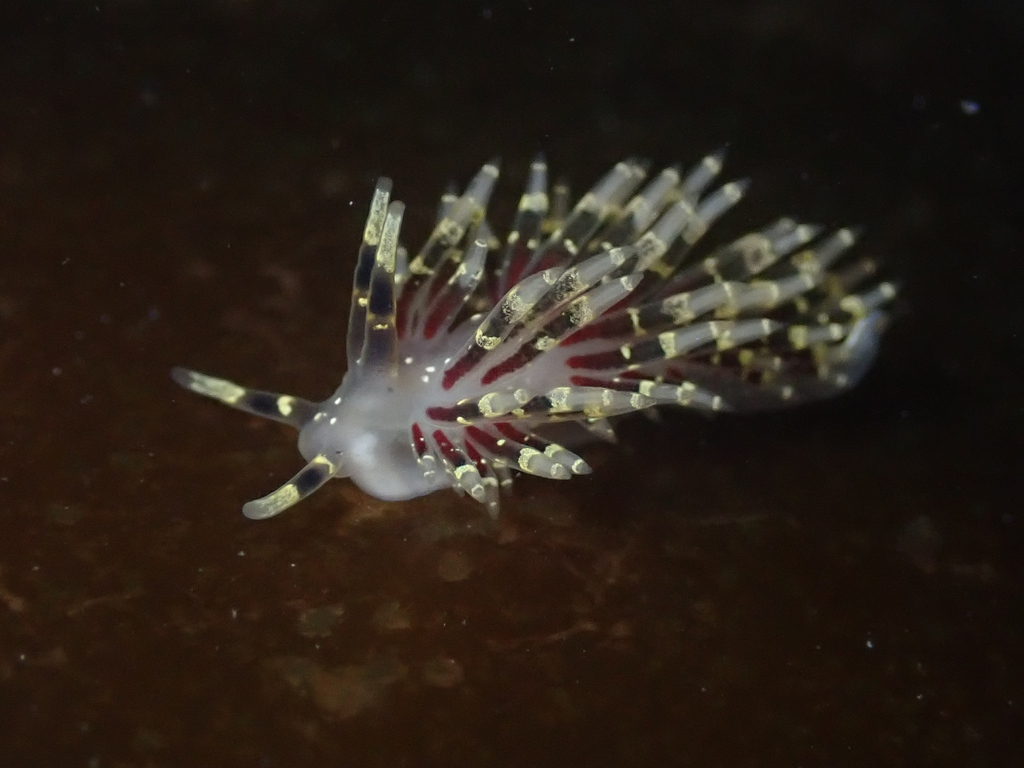

Elegant Aeolid Abronica abronia
This regal beast was quite a surprise find for me in the tidepools of Humboldt County a few days ago. Well. . . is there ever a tidepooling adventure that doesn’t involve something surprising? Not for me! By ‘surprise,’ I mean unexpected, as this nudibranch wasn’t really on our radar to be in the area.
Introducing Miss Elegant Aeolid, Abronica abronia, also known as the Graceful Aeolid. On iNaturalist this species had only been recorded six other times.
Nudibranchs are hermaphrodites, but this one, in particular, is giving me Misses vibes. So gentle, so polite, so much grace. Don’t you agree?
You may find this stunning species along the US West Coast from Washington state down to Baja California, Mexico. This lovely lady was about one inch long, 3ish cms. So get your noggin right above that water line and start planning how to get your partner to give you a neck massage post-tidepooling while you search for this nudi, or any of her cousins.
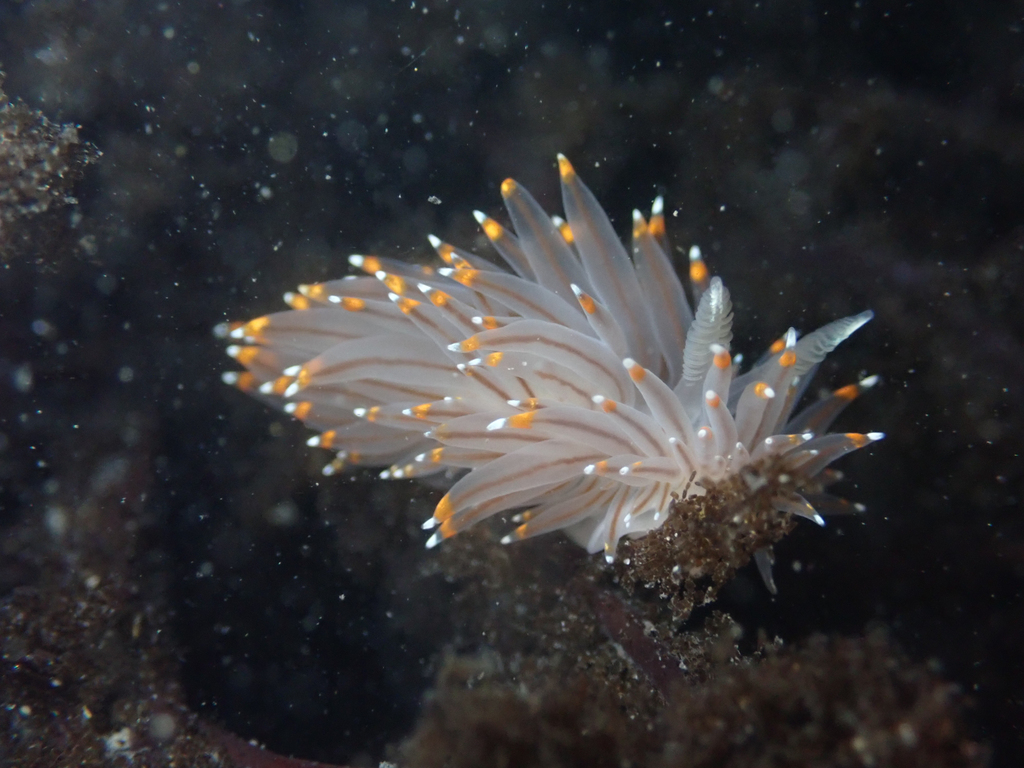

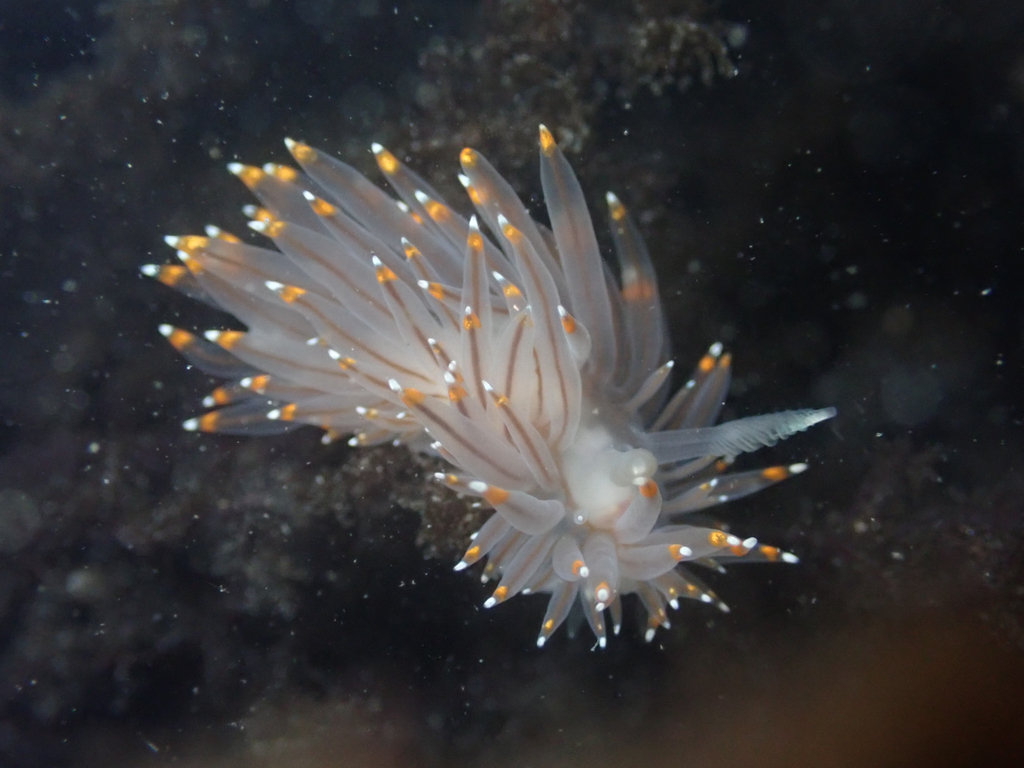
White-and-orange tipped nudibranch, Antiopella fusca
The last weekend in October we got a nice taste of tidepooling in Humboldt. We managed to find three new nudibranch lifers, and this White-and-orange tipped was one of them!
Scientifically known as Antiopella fusca, it’s found from Alaska down to central CA, and northern Japan. Fusca loosely means gloomy/dark/black, which doesn’t exactly describe its appearance.
Like other nudis it feeds on bryozoans, but I found the three I saw over this particular weekend hanging at the surface on brown algae mostly.


Amanita Sect. Vaginatae
Giraffe? Egg? Who is she?
This Amanita Sect. Vaginatae was spotted out in the open, just chilling, patiently awaiting to be “ooo-ed” and “aww-ed” by our friend Mandy.
Not sure if this pattern could be considered reticulate, which generally refers to a “net-like” pattern on stems of boletes. But. . . kinda close, I’d say!
To those that aren’t fungal fanatics, this shape is called a volva . . . not that one. This egg-y structure is what remains of a universal veil, a layer of tissue that provides protection to the young fruit. As the mushroom grows it pushes through this veil, eventually causing a crack, which exposes the growing cap and stipe (stem). The veil, and therefore the volva often disintegrates into nothingness as it ages.
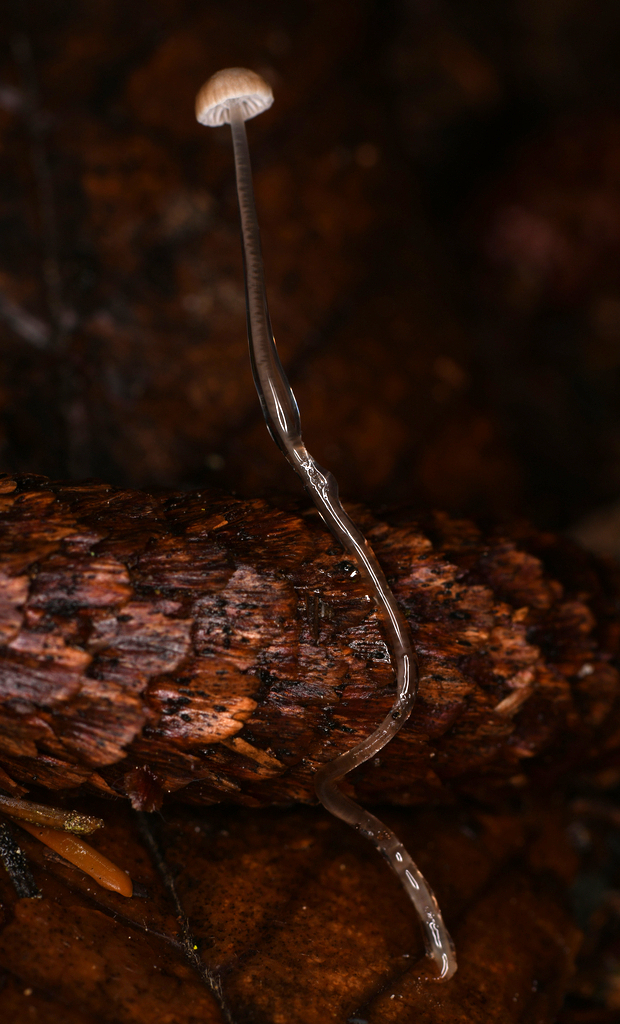

Dripping bonnet, Roridomyces roridus
Gewwwwww! I spy a Dripping Bonnet (Roridomyces roridus).
Next time I’ll have to pull out the “scorpion hunter” aka black light because this tiny boi is apparently bioluminescent! I confirmed by scrolling through iNaturalist, click here to do so for yourself!
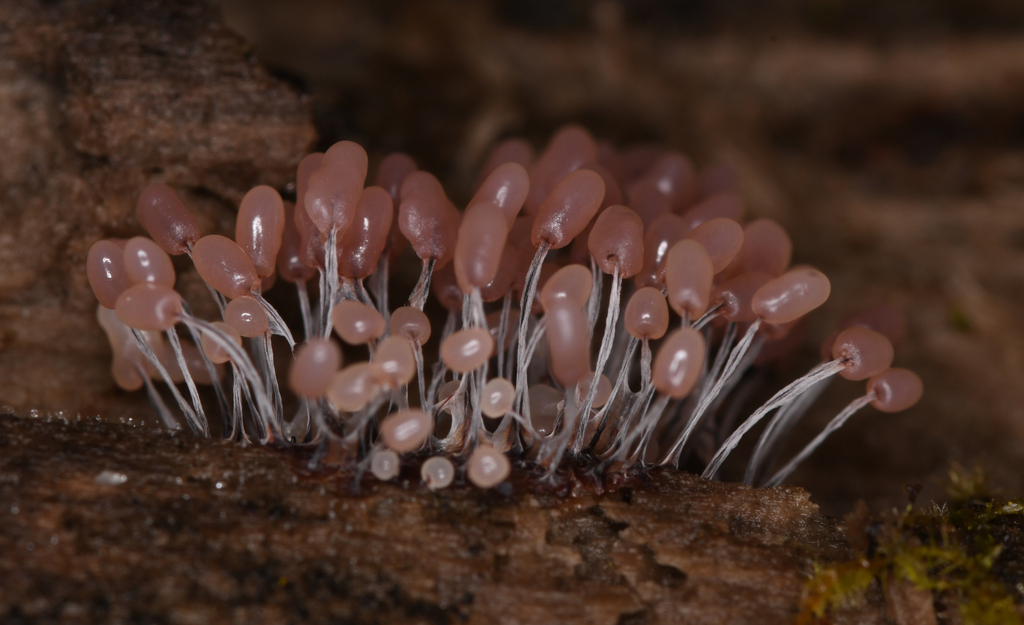
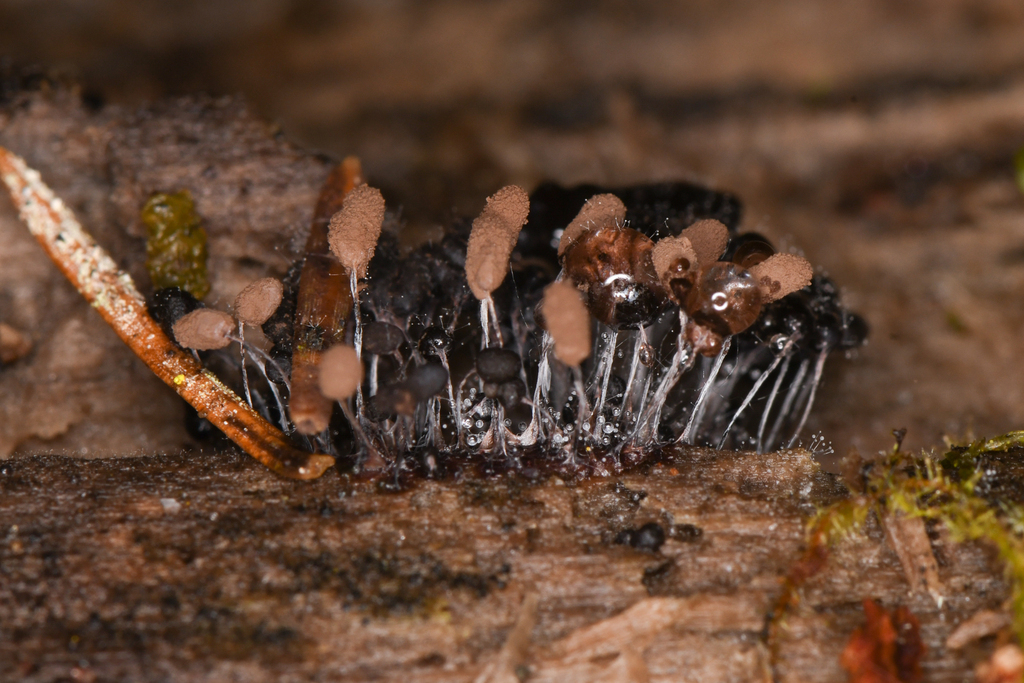

Stemonitopsis Typhina
When I see slime molds like this Stemonitopsis typhina, I typically look like the third photo.
I’d call these ‘stretches for slime mold,’ or ‘fungal yoga.’ But I’m taking other pose name suggestions in the comments.
I was able to return to the same exact glob of slime mold. The pink version is from November 16th, and the brown is from November 25th.


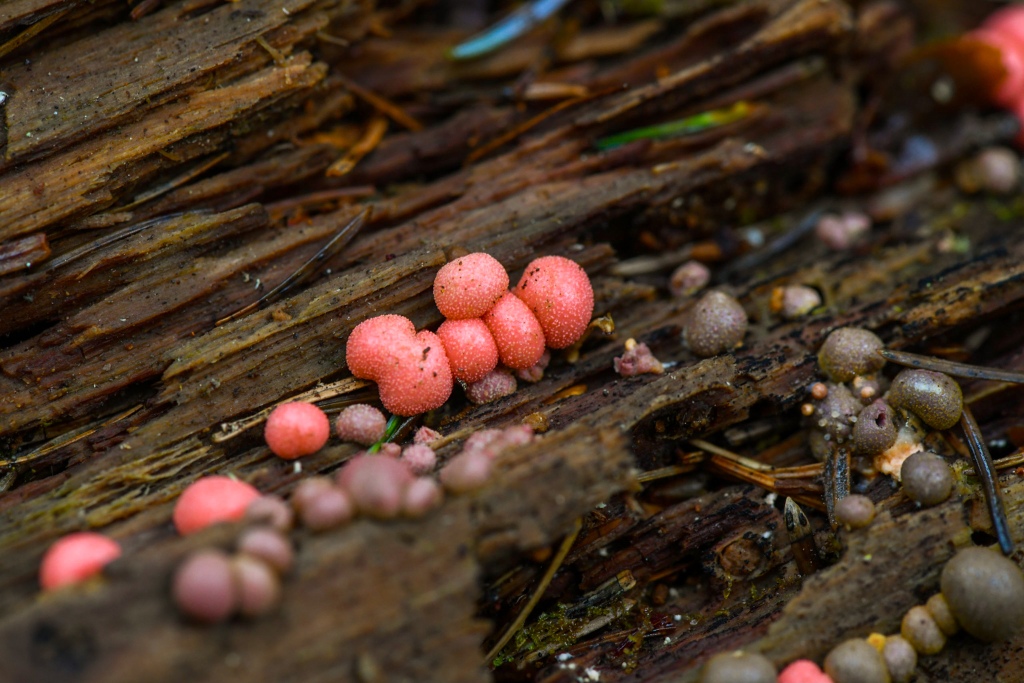
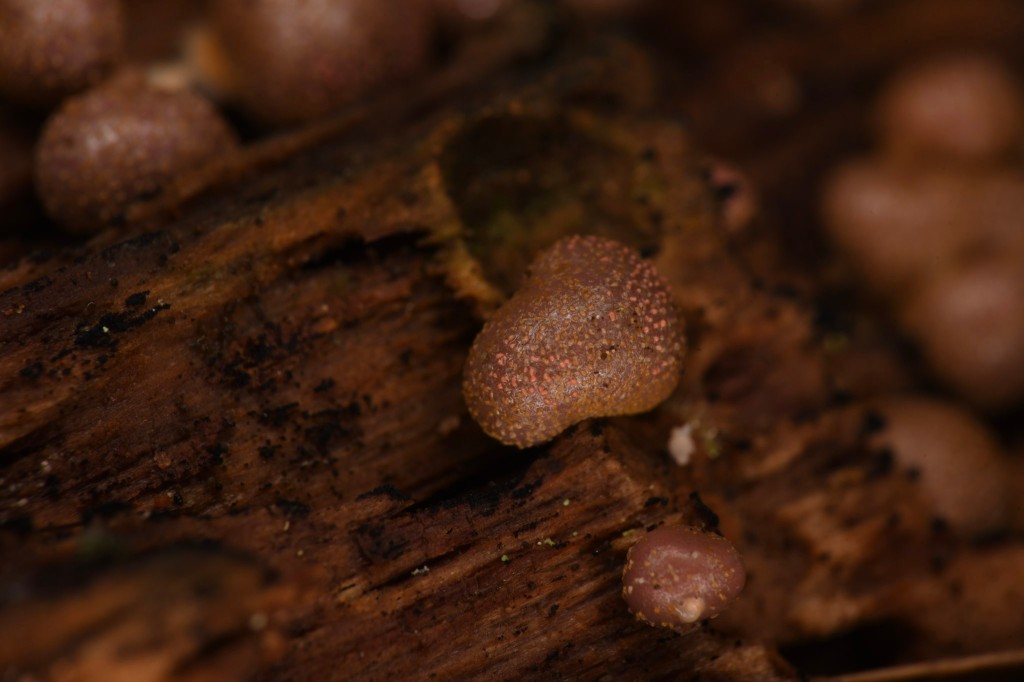
Wolf’s Milk, Lycogala epidendrum
Bubblegum anyone?
Nahhhh, you wouldn’t want to smack on this stuff! It’s Wolf’s milk (Lycogala epidendrum) of course!
For another analogy. . .the wolf’s milk slime mold is like a pimple waiting to be popped. If ya know, ya know. It’s near impossible for me to NOT pop one of its irresistibly squishy blobs, but I refrained this time.
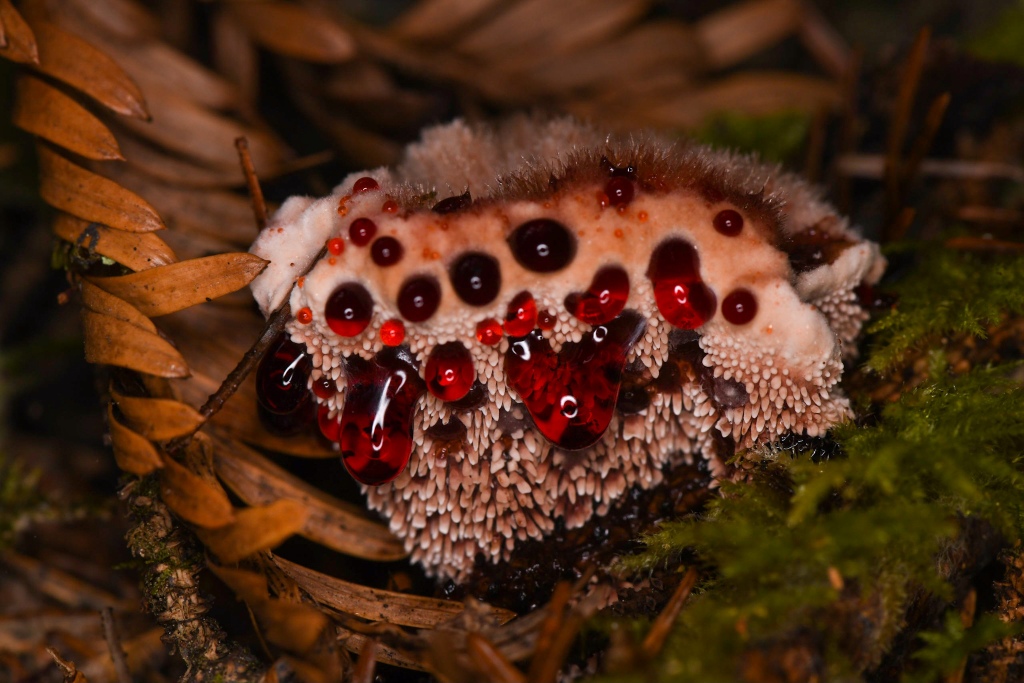
Red-juice tooth, hydnellum peckii
Hydnellum peckii definitely gets it’s moment on the internet this time of the year, so of course I had to add my own photo to the mix. This Red-juice tooth, hydnellum peckii was particularly juicy.
This fungi has teeth, but no stipe, is mycorrhizal, but isn’t edible, and loves to “bleed” its excess moisture, and to our entertainment.

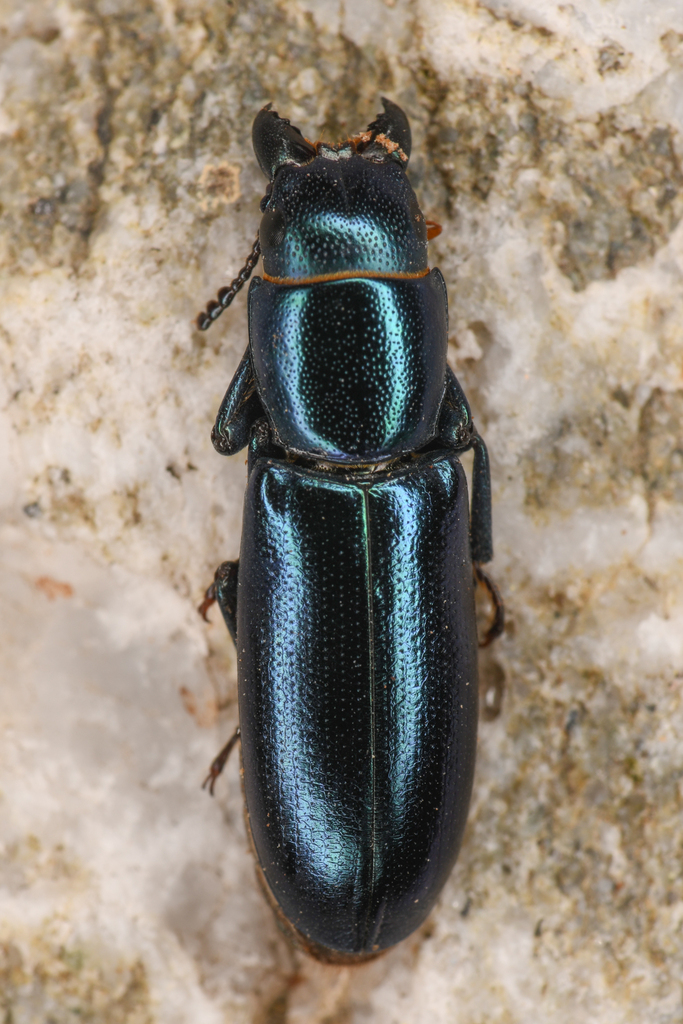

Pine Trogossitid Beetle Temnoscheila chlorodia
SHINY!
Over the last four years, we’ve uploaded four observations to iNaturalist of these shiny green beetles, most recently in October ‘22 during a trip to the Bay Area.
This Pine Trogossitid Beetle, Temnoscheila chlorodia was chilling under the bark of a deceased Sycamore tree. This often underlooked habitat by naturalists is where the adults and larvae make their home and find most of their prey.
As bark-gnawers, their large and sharp mouthparts are perfect for. . . you guessed it, gnawing wood, as well as eating other beetles and fungi.
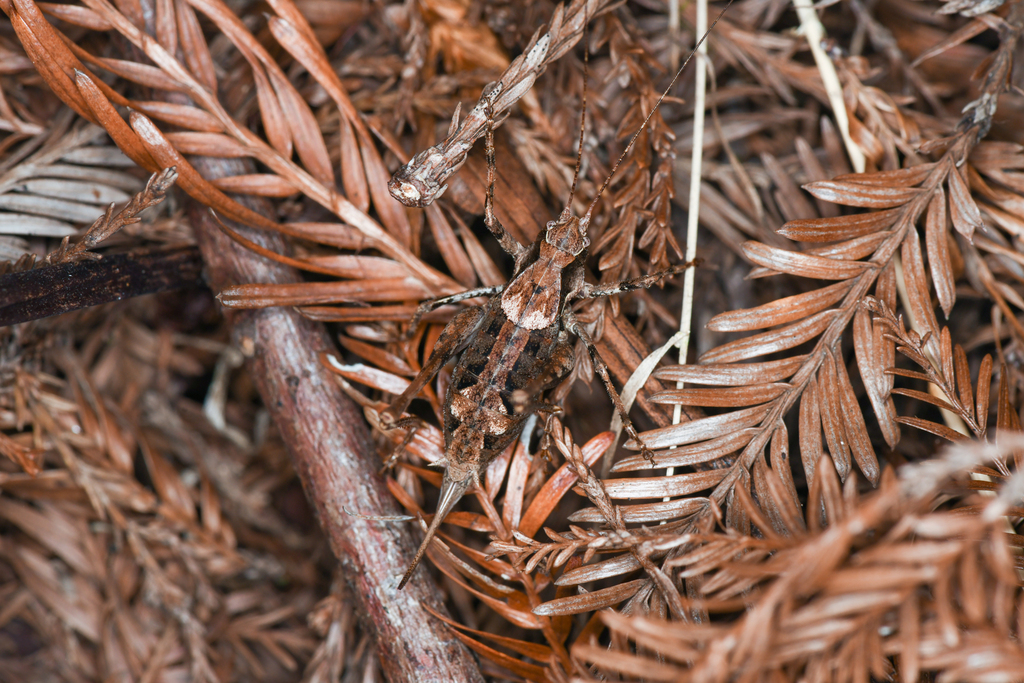
Genus Neduba (Katydid)
Can you spot the Katydid?
I spotted this Shieldback Katydid (Genus Neduba) on an afternoon walk while living in Freshwater (Humboldt County). Can someone say camooooooouflage?!
The last photos show the ovipositor, the long thing out it’s back end. It’s not a “stinger” folks, but an egg-laying appendage. So this Katydid friend is a female! Hello lady!

Big-eyed Toad Bug, Gelastocoris oculatus
Any creature with a name like “Big-eyed Toad Bug” is a winner in life.
Scientifically, this bug is named Gelastocoris oculatus. ‘Oculatus’ translates to big-eyed.
This bug can be found throughout North and Central America on the muddy shores of streams and lakes. I found this one making small pathetic leaps along a side channel of the South Fork Eel River in Northern California.
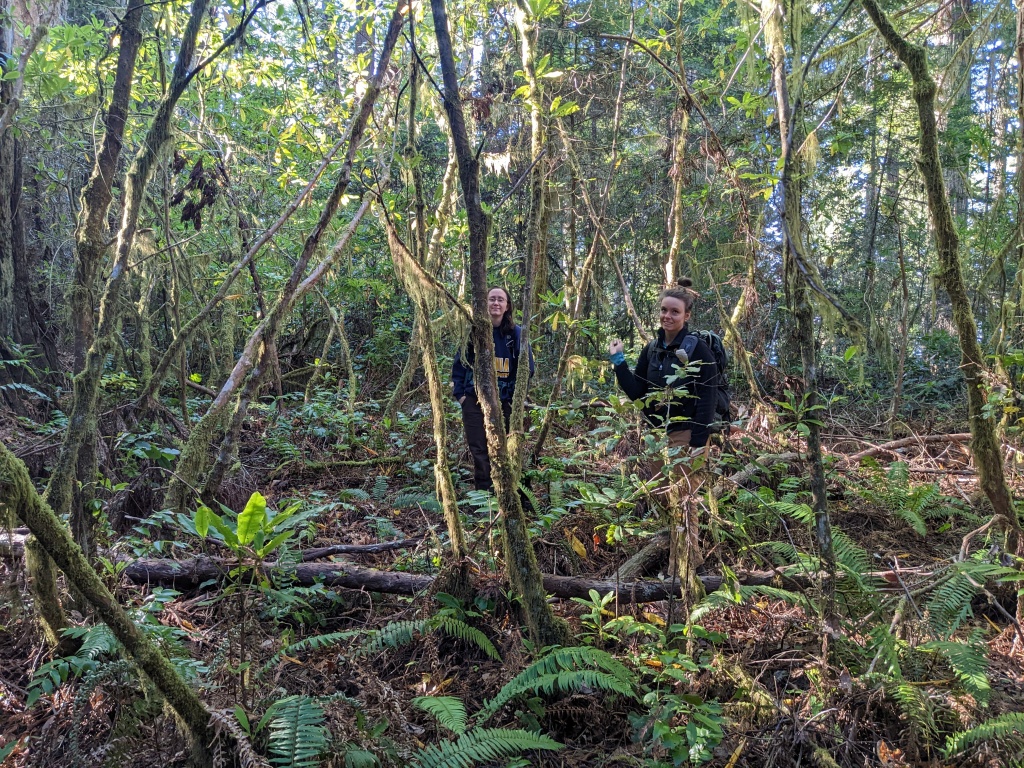
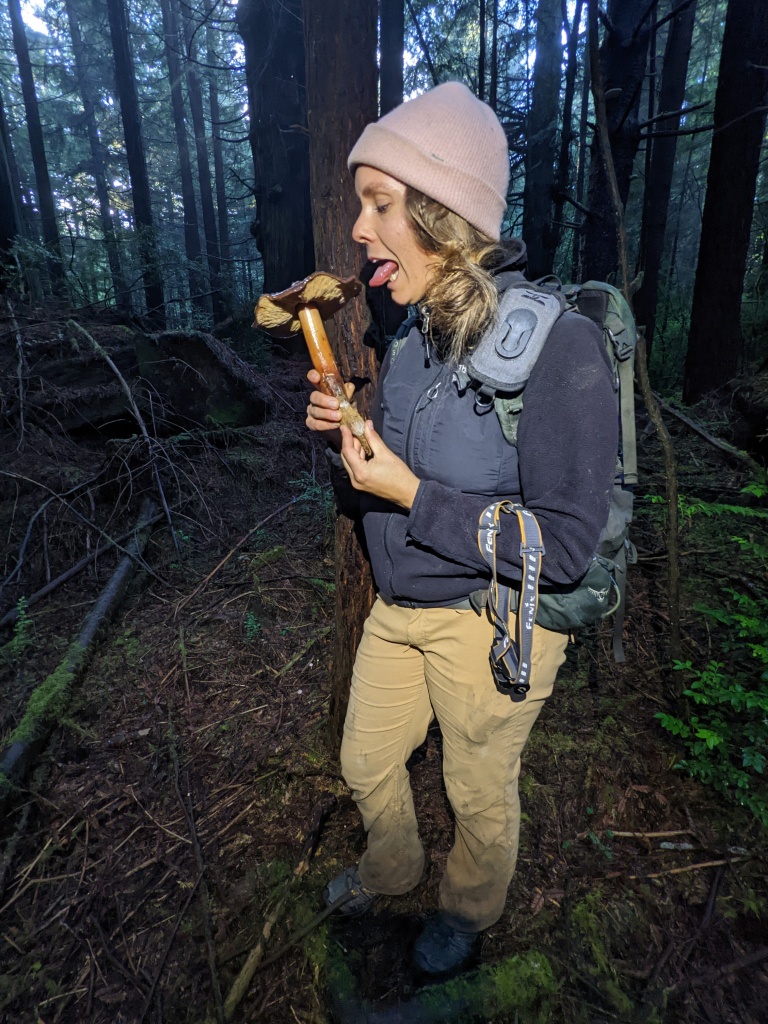

To see these fun and educational posts when they go live, follow me on Instagram:
P.S. These captions were all written over the span of a month, and each had various sources. Shoutout to those, of which I don’t have records, but many pages of Wikipedia were referenced, so BIG thanks to them.
Hi chloe i hava a neighbor who goes to Isreal and does historicl digs in caves etc. What kind of footwear do you wear on your backcountry hikes .. she says sneakers dont cut it !
Sent from Mailspring (https://link.getmailspring.com/link/316878DD-1608-4043-B8BB-EA0ECB4B5180@getmailspring.com/0?redirect=https%3A%2F%2Fgetmailspring.com%2F&recipient=Y29tbWVudCtlNnRna255cGs4aW0tcC1oejc4eDZyZWJAY29tbWVudC53b3JkcHJlc3MuY29t), the best free email app for work
LikeLiked by 1 person
Oooo sounds fascinating! Yes sneakers don’t cut it! I wear over the ankle hiking boots, usually from the brand Soloman or a similar ones with a Gortex outer layer that provides water prof-ness.
LikeLike